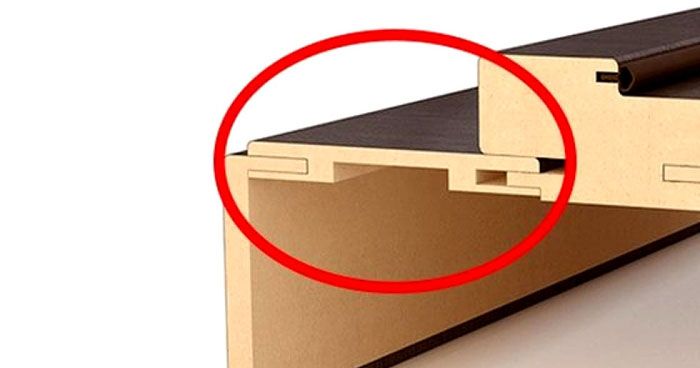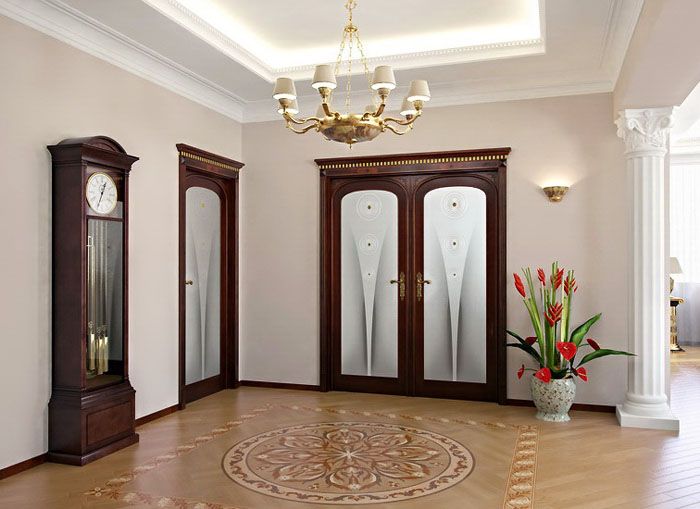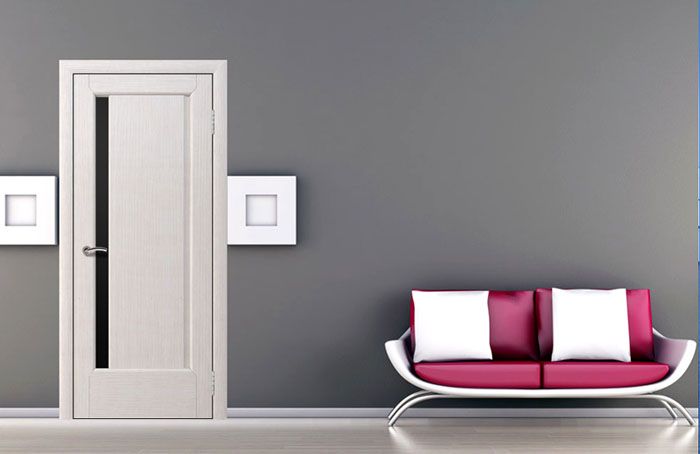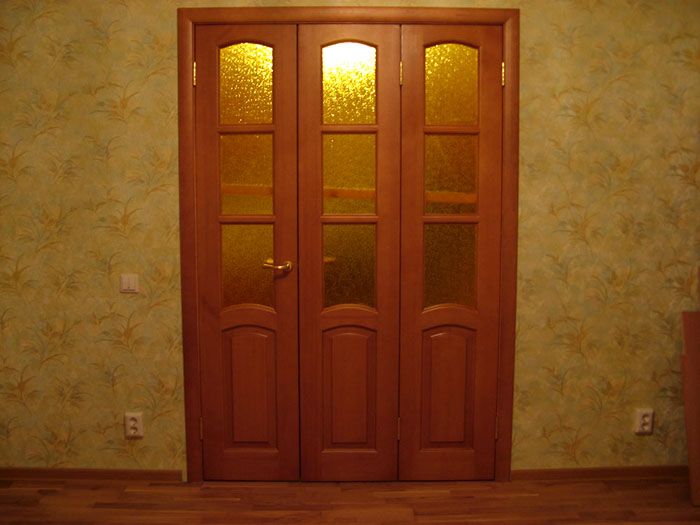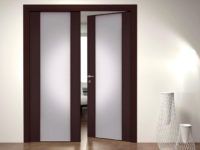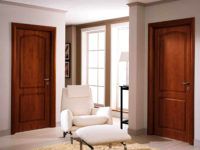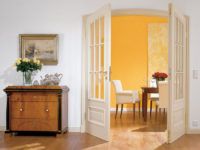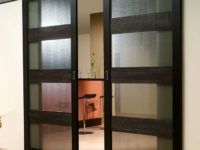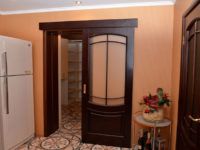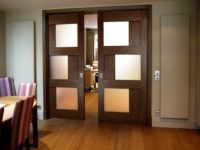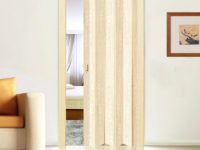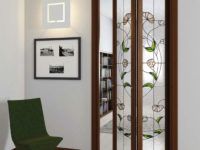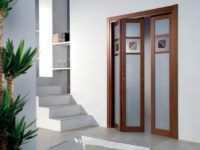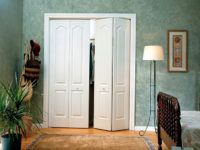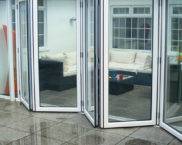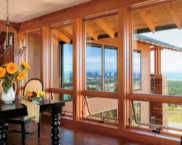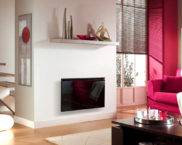How are the standard dimensions of interior doors determined?
A beautiful interior is not only wall, ceiling and floor decoration, but also well-chosen furniture and curtains. Do not lose sight of the fact that interior doors play an important role in the interior. It is they who sometimes emphasize everything that the designer conceived. Therefore, it is very important to choose the right door, not only in terms of their design, but also in terms of size. It is about them that will be discussed in this article. We will consider the standard dimensions of interior doors, their correspondence with the aisles. Correct measurement methods and calculations will be shown.
The content of the article
- 1 The functionality of interior doors and their purpose
- 2 Standard dimensions of interior doors - GOST and requirements
- 3 How to correctly measure the parameters of the opening
- 4 Selection of the size of standard interior doors with a frame between the corridor and the hall
- 5 Interior door marking
- 6 Sizes of non-standard interior doors
- 7 Variety of interior doors
- 8 Video: types of interior doors
The functionality of interior doors and their purpose
Main function interior door - close the passage between rooms. And depending on the closed premises, it can have different sizes. For example, the widest structures are installed at the entrance to the hall. The smallest in the office space.
At the same time, such a functional feature as transparency is used only for certain rooms. Put them in the toilet and in bathroom no, that's for sure. According to purely constructive criteria, they can be swing, sliding, folding, cassette.
There are standards for dimensions that were adopted even during the construction of the first apartment buildings in Soviet times. They have changed slightly since then. For example, the standard door height is 2 m. The Europeans have a standard of 2.1 m. Since most computer programs for the production of various products and the design of buildings (meaning purely constructive planning and calculation) came to Russia from European countries, then domestic manufacturers have gradually switched to this height size. Although it is impossible to say that about everyone. That is, when choosing a door, you must first measure the height of the doorway.
Attention! In Europe, very often they use not millimeter measurement, but modular one. So the height according to the modular definition will be M21. Everything is simple here: 1 module - 100 mm. It turns out that the M21 is 2100 mm.
As for replacing old doors with new ones, if a major alteration is not planned, and simply replacement is made, then standard typical interior doors are selected. If constructed partitions or additional openings are made, then the dimensions of the door frame are taken from the overhaul project. It is clear that the choice of a standard model is not only a simple choice from the products offered on the market, but also a simple installation in a standard opening.
Standard dimensions of interior doors - GOST and requirements
So, there is a GOST size of interior doors, according to which they are produced. It indicates not only these parameters, but also the size of the opening for interior doors. These two values are interconnected. Table of standard sizes for interior doors:
| Height, mm | Width, mm |
|---|---|
| 2000 | 550 |
| 600 | |
| 700 | |
| 800 | |
| 900 | |
| 1200 - with two sashes, 600 mm wide each | |
| 1400 - with two leaves, width of one 600, the other 800 mm. | |
| 1500 - with two doors, the width of one is 600 to the other, 900 mm. |
If the dimensions of the door you are purchasing exactly correspond to the parameters indicated in the table, then you are very lucky. Because standard products are much cheaper than ordered ones. Of course, a doorway can be fitted to a custom door, but this is not always possible. This is especially true for panel houses, in which it is impossible to expand the openings or increase their height. This violates the integrity of the entire structure of the house.
There is one more parameter that must be mentioned. This is the width of the timber from which the door frame is made. Basically, three dimensions are taken into account when planning and marking:
- clean opening is the width of the door leaf;
- door frame width;
- width of the opening in the wall.
By the way, here you can't talk only about the width. Exactly the same relationship between height parameters. So, a gap of 10 ÷ 15 mm should remain between the outer ends of the box and the inner wall opening. This is done so that the box can easily stand in the opening, and so that it could be aligned in planes.
Standard sizes of doorways
Table of standard dimensions of the height and width of the doorway in accordance with the same dimensions of the frame, which were indicated in the first table:
| Height, mm | Width, mm |
|---|---|
| 2060÷2090 | 630-650 |
| 680-700 | |
| 780-800 | |
| 880-900 | |
| 980-1000 | |
| 1280-1300 | |
| 1480-1500 | |
| 1580-1600 |
As you can see, the standard dimensions of doorways are slightly larger than the door parameters.
Door frame dimensions
And one more indicator that must be taken into account is the thickness of the door frame timber, it determines the thickness interior door... The standard size is 75 mm. It was legalized for one reason - this is the thickness of the reinforced concrete slab, which is used for the partition in old-style apartment buildings. It was this thickness that guaranteed the required load-bearing capacity of the curtain walls.
How to correctly measure the parameters of the opening
This is a very important component of the repair, because it depends on this action whether the door structure fits into the opening, and what dimensions the gaps between the mating elements will be. The thing is that the quality of construction in those early years left much to be desired. Therefore, the openings in the walls do not guarantee the evenness of the edges, both vertically and horizontally. That is, the geometry of the shape is not an exact rectangle.
Therefore, measurements must be taken in several places. Usually it is along the edges and in the middle (even in several places). Moreover, all measurements are carried out strictly in planes, that is, horizontally and vertically, for which you will have to use additional control instruments such as plumb lines and laser level... The photo below shows how to correctly measure the dimensions of the opening for an interior door with a frame.
As practice shows, the doorway very often does not correspond to standard dimensions. If the actual parameters are slightly larger, then this is not a big problem. The gap can be filled with mortar and closed with additional elements, or you can order a door with large parameters. If the dimensions are smaller than the standard, then the edges of the opening will have to be adjusted to fit them. Or fit the door under the opening.
Attention! If the width of the opening is more than 1000 mm, and the door according to the plan should be swing, then you will have to order a two-leaf version. Because the door leaf should not be more than 900 mm.
Why such a strict warning. It's all about the weight of the door leaf. Its hinges simply cannot withstand long-term operation. After which it will just start to sag, and these are problems when closing.
And a few words about accessories for interior doors, or rather about their sizes. Even here there are standard parameters: length - 2.1 m, width - 0.7 ÷ 2.5 cm, thickness 0.6 ÷ 3 cm - this is for the strip with which part of the wall end is closed. But it must be noted that the width can be up to 4 cm. This is for load-bearing walls. As for the platbands, there are no standards.
Selection of the size of standard interior doors with a frame between the corridor and the hall
Table number one shows the dimensions of wide doors, which are designated as double doors. Above, attention was drawn to why it is in these places that structures with two sashes are installed.But it must be added that standard interior doors with a frame installed in the passage to the hall are the dimensions of typical openings. Even in those distant Soviet times, the passage in the hall was made wide, because the living room is a place where sometimes a lot of people gather. This means that the entrance to this room must be large. In addition, it is in it that the overall furniture is installed, which may not squeeze through the opening with small dimensions. That is, they took into account both purely aesthetic criteria and purely practical ones.
Interior door marking
All wooden door structures are controlled by GOST number 6629-88. This document says that products (wood) have a graphic and letter designation. We are interested in the letters, because they are indicated in the accompanying documents.
So, what do the letters in the marking mean?
- "O" - with glazing;
- "G" - deaf construction;
- "K" - a canvas with a swinging sash;
- "U" - reinforced model, which can be installed as an input.
Moreover, there are letter designations that relate directly to the structure. The letter "D" means that this is a door block, the letter "P", that it is just a canvas.
Attention! In the marking of interior double-leaf doors, the dimensions of the leafs must be indicated.
Sizes of non-standard interior doors
What does it mean, non-standard interior doors and what are their dimensions? That is, if a door, say, 700 mm wide does not fit into the opening, and leaves large gaps with a width of 600 mm, then it is necessary to make a structure with parameters somewhere between these values? Will this be a non-standard model?
If “YES”, then all products made to order and not falling under the GOST parameters can be considered non-standard. But let's think sensibly. The construction of apartment buildings is carried out according to projects that are themselves developed according to standards. This means that they cannot have non-standard doorways.
Then under what circumstances are non-standard designs used? There are two options:
- When is redevelopment of an apartmentwhere the partition is being built. You can install a custom model in it.
- When a private house is being built, in which you can not use the standards for the size of doorways.
Variety of interior doors
Basically, all interior doors are divided into three categories, which are based on purely constructive solutions.
- Swinging, when the canvas opens by twisting around the hinges.
- Sliding, when the canvas moves along the wall along the guides.
- Foldable, when the structure is folded like a book, opening the passage.
Swing
The most commonly used type. The conservatism of people sometimes reaches the point that swing models are installed even where they do not belong.
| pros | Minuses |
|---|---|
| Simplicity of design | It requires a certain amount of space to open. In narrow spaces, this can cause some inconvenience. |
| Easy to install | |
| A good degree of sealing of the gaps between the box and the curtain, which provides noise and heat insulation of the room |
Sliding
These models are often referred to as compartment doors. There are two varieties, which differ from each other in the openness of the canvas when opening. That is, it simply moves along the guides along the wall or is recessed into the wall itself. The second option is preferable, but difficult to install.
The disadvantages include the fact that special fittings are required for installation. And the installation process itself is not easy. Like swing ones, they can be single or double. In the second case, the doors simply move apart in different directions when they need to be opened.
Folding
By the way, the first two options can be designated as the standard for the size of interior doors with a box. What can not be said about the folding design. It is with it that it is most convenient to block non-standard openings. The canvases in them are fastened to each other by hinges, and the movement is carried out on rollers. In this case, the number of leaves can be unlimited. Again, everything will depend on the width of the opening.
It should be noted that the minimum width of one sheet is 10 cm. That is, the less this indicator, the more sashes will have to be made for the structure. Although such models look very original.
The advantages include the ability to close curved openings. But one single drawback is quite serious. This is a loose abutment of the canvases both between themselves and to the box. So there is no tightness.
Related article:
Folding interior door book. A separate material contains photo examples of successful designs, advice on selection and installation.
This concludes our review. If you have any questions or comments, then you are welcome in the comments, we will be happy to answer them.
And finally, a small educational video on today's topic:









